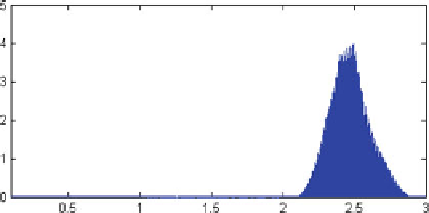Environmental Engineering Reference
In-Depth Information
Fig. 2.23 Quadratic error
between the reference torque
and the SOSM control-based
one (voltage sags)
Time (sec)
2.5 Conclusions
This chapter dealt with high-order sliding mode control of doubly-fed induction
generator-based wind turbines. Simulations using the NREL FAST code clearly
show the HOSM control approach effectiveness and attractiveness in terms of
robustness (FRT capability enhancement) and of sensorless control. Moreover, it
has been confirmed that there is no mechanical extra stress induced on the wind
turbine drive train as there are no strong torque variations.
2.6 Future Work
Future works should be oriented toward the evaluation of high-order sliding modes
control for the following key investigations:
• Power control according to grid active and reactive power references.
• Wind turbine grid synchronization.
Appendix
Characteristics of the simulated wind turbine
Number of blades
3
Rotor diameter
70 m
Hub height
84.3 m
Rated power
1.5 MW
4.4532 9 10
5
kg m
2
Turbine total Inertia
Parameters of the simulated DFIG
R
s
= 0.005 X, L
s
= 0.407 mH, R
r
= 0.0089 X, L
r
= 0.299 mH, M = 0.016 mH, p = 2











